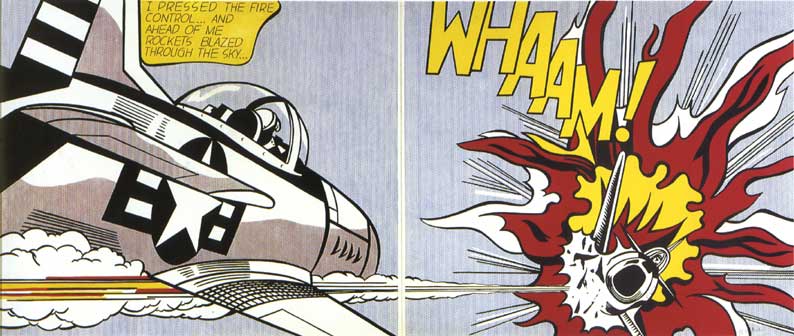“What? Why did you ask that? What do you know about my image duplicator?” snarls the cartoon villain, abbreviated to a pair of angry eyes staring from a furrowed brow. In retrospect, Image Duplicator, an early example of Roy Lichtenstein’s comic-strip painting, looks like a wry exercise in self-portrayal: a typically ironic portrait of the Pop Artist as a young man. “Roy Lichtenstein: All About Art”, at the Hayward Gallery, surveys a career resolutely dedicated – some might say sacrificed – to the act of image duplication.
Lichtenstein is famous for blurring the boundaries between high art and popular culture by creating a style of painting based on comics and cartoons. He is still best known in this country for the explosively titled Whaam!, a large diptych reworked from an image taken from an American war comic of the early Sixties. Owned by Tate Modern, this painting, with its cartoon fighter-pilot blasting his adversary into a roseate oblivion of red and gold flames, has been given pride of place in the opening gallery of the Hayward’s exhibition. It is a prime example of Lichtenstein’s principal formal innovation, a kind of mid-twentieth century pastiche of Seurat’s pointillisme, namely his adoption of the Benday dot – a reproductive device used in the halftone screens of mechanical printing – as the base unit of painting. The other main elements of his style were also fully formed, the picture demonstrates, by the early 1960s: broad areas of bright, flat colour, hard black outlines, and a curvilinear cartoon speech bubble laconically spelling out the obvious. “I pressed the fire control… and ahead of me rockets blazed through the sky”.
In the present context Whaam! acts as a usefully graphic reminder of the incendiary impact which Lichtenstein’s early work had, in the city...

Roy Lichtenstein at the Hayward Gallery 2004
29-02-2004

